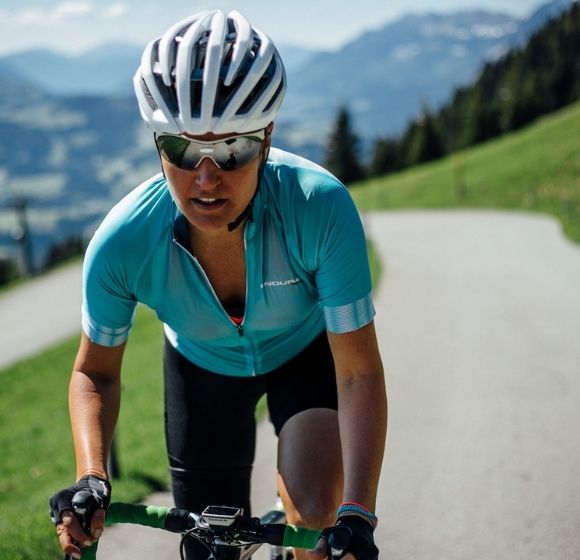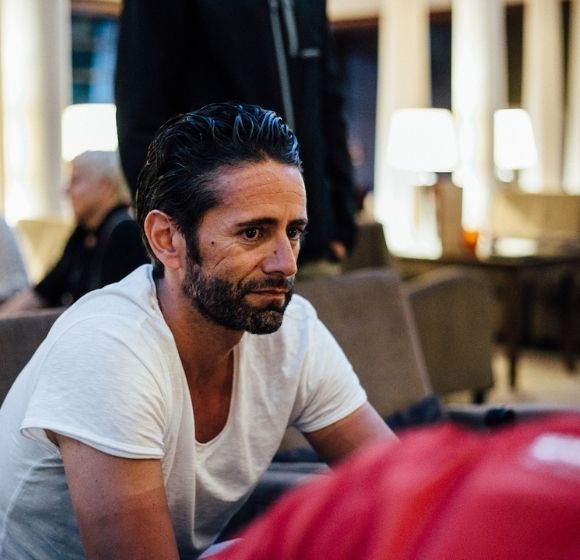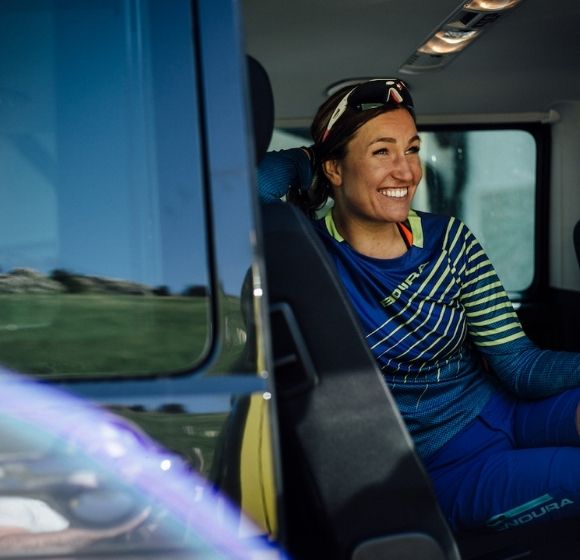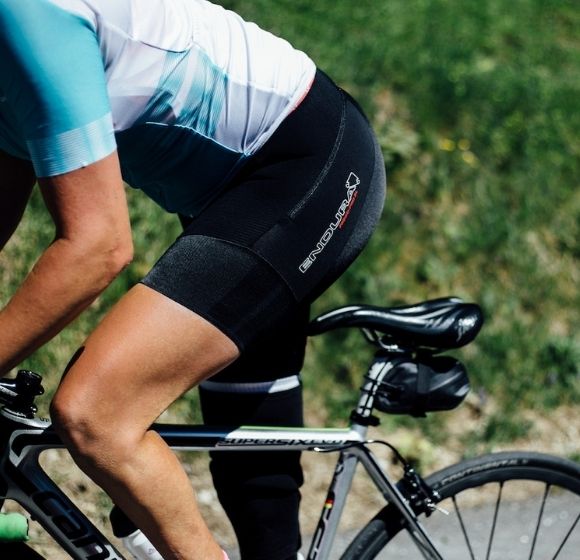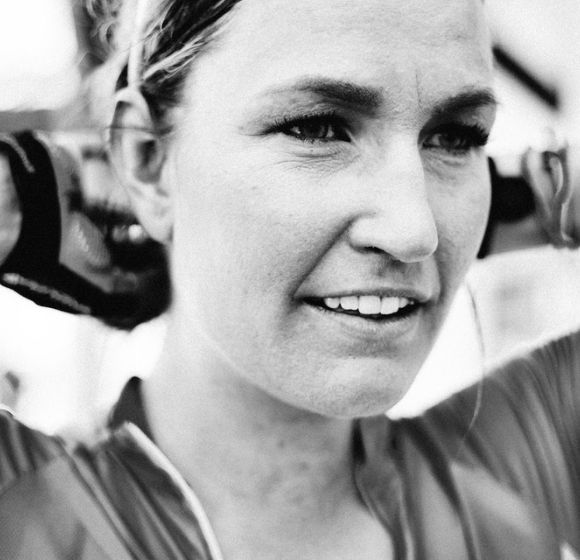
DENISE SCHINDLER
Endura's inspirational Paralympian
Certain personalities are said to ‘light up a room’. Denise Schindler’s is one.
She is funny, confident, vibrant and unafraid to discuss issues surrounding disability and Parasport, even those regarded as taboo.
When she tells you that the 2012 Paralympic Games in London changed mainstream society’s perceptions of disabled people, not only as athletes, but as citizens with an equal right to feel confident and attractive, she does so without reticence.
And when she tells you that work remains to be done, as long as disability is considered a judgment in some developing countries, she is as serious as when she competes for world and Paralympic titles. Moments of seriousness are fleeting with Schindler, however.
“In some countries, disabled people are still struggling. We still need role models to explain and to give self-confidence.”
Only 30 minutes of our two days in a hotel in Kitzbühel are taken up with a formal interview. Schindler is such an open person that watching her interact with staff and guests, and with Endura’s other world class athletes, winners variously of Challenge Roth and the Race Across America, is as instructive.
As she breezes through the bar, she stops to share a joke and inform us of her plans for the day: to ride some of the biggest mountain passes in the Austrian Alps, including the Grossglockner. Her smile is a mile wide, even if hours of suffering lie ahead.
Schindler remains at the centre of things throughout the weekend, whether in the restaurant or on the savage gradients of the Kitzbüheler Horn, distributing smiles and watts with the same freedom. That she should do so having suffered life-changing leg injuries in an horrific childhood accident with a tram speaks volumes for an indomitable personality.
She believes that life’s rewards await anyone prepared to earn them, but hers is not the phoney optimism of the relentlessly upbeat. She is happy to admit that life is not always easy, and argues with equal passion that failure is an essential part of the human condition.
“I show people what’s happening behind the scenes,” she says of her public speeches; inspirational talks for which she is almost as well-known as for her athletic accomplishments.
“The major point is when you get people to realise that everyone is struggling, and I struggle too, but that doesn’t mean that you have to give up. A lot of people won’t even try. They’re stuck saying: ‘I can’t.’ Once they’re on the path, they start to walk, but the first step is always the hardest.”
With Schindler as a guide, walking might only be the beginning. Her latest project could be her most inspirational yet. On June 25, 2017, she will roll out of Sonthofen with fellow paracyclist Martin Hutter in a bid to become the first amputee pairing to complete the formidable Tour Transalp.
THE TOUR TRANSALP
“If we finish the Tour Transalp, with an above-the-knee amputated man and a below-the-knee amputated woman, we prove that it’s possible. It’s definitely a statement.”
Mentally exhausted from the four-year Olympic cycle for the Rio Games, Schindler realised that she needed a change. She describes the Tour Transalp as “like a dream for me,” even if tranquility is likely to be in short supply on an 865km route littered with 18,000 metres of climbing.
“I’m at the point where I can’t say 100 per cent whether I will get through the Tour Transalp. There’s a chance I will fail, and that makes it so interesting.”
Schindler’s was no snap decision, however. She thought long and hard before committing to seven days of racing on a course that includes the Mortirolo, Stelvio, and Timmelsjoch, enduring a period of soul searching in South Africa.
“I went to South Africa for a month to train. I was listening to my body and to my inner self: ‘Am I up for the Tour Transalp? Do I really want to be in the saddle for so many hours? Or do I need a longer break than normal to recover from the Olympics?’”
She describes her decision as a necessity. A new goal has recharged her competitive spirit, after four years of complete focus on the Paralympic Games.
“It’s great to have such a new target, which is really challenging for me. I’m at the point where I can’t say 100 per cent whether I will get through it. There’s a chance that I will fail, and that also makes it so interesting.”
On the face of it, Schindler and introspection seem uneasy bedfellows - few people embody a ‘can do’ attitude so completely – but her triumphs are made greater by her doubts, as we will learn. Having made her decision, she sent a text message to her friend and sometime training partner Martin Hutter.
TEXTING MARTIN
The pair had met a training camp in Mallorca, where the shared experience of paracyclists, and amputee athletes in general, provided a natural topic of conversation. Despite sporadic contact since - a necessity, given the all-consuming nature of preparation for a Paralympic Games - Schindler didn’t hesitate to lay the challenge of the Tour Transalp before Hutter by text message. She laughs as she relates the story.
“When I decided in South Africa to do the Tour Transalp, I was thinking, ‘Ok, who’s going to join me?’ and the first name that came into my mind was Martin. When I was back in Germany, I sent him a text message.
“If an above-the-knee amputated man and a below-the-knee amputated woman finishes the Tour Transalp, we prove that it’s possible. It's definitely a statement.”
“There was no ‘Hi Martin’ or anything, it was just: ‘Are we both doing the Tour Transalp’, then a question mark, and then a smiley, and that was it! And he replied saying: ‘I haven’t heard from you for two months, and you ask me by text? But, yes, I’m in!’”
Hutter joins the Endura gathering in Kitzbühel on the second day, where Schindler has penciled in a full day’s training in the Austrian Alps. He is friendly but more reserved than his riding partner: a natural state of affairs, given Schindler’s irrepressible personality.
They make a good team. Hutter is naturally stronger, but Schindler has all the experiences of a world class performance programme to share. There is a psychological bond between the pair too, which Schindler expects to draw upon when the Transalp does its worst.
“Of course, it takes commitment, will, endurance, a strong mind, and it won’t be easy, but if you prepare properly, a disabled person can achieve things that even some able-bodied people might say is crazy.”
Typically, Schindler has a wider agenda. Not content with inspiring disabled people to embrace sport, she has her sights set on encouraging the able-bodied community too. Her mission is simple: “To show them what’s possible.”
#NEVERSTOPSPINNING
If the circumstances surrounding Schindler’s injury seem unimaginably brutal, then the long and winding road to some sort of normality was scarcely easier.
Suffering a life-changing injury as a young child is a double-edged sword. While fast-fading memory prevents mental scarring, physical growth means a seemingly endless period of recuperation. Every year until she was 14, Schindler would undergo surgery. Holidays meant only swapping school for hospital.
“I’m able to bring out the best in people and to move them out of their comfort zone; to overcome their fears and chase their dreams. I love doing that.”
“That was a very tough time, and I think, because of that, for me it is a privilege to be free in what I do, and to have that chance to live my dream as an athlete. Until I was 18, sport was not something I loved, or even liked. I was always the last one to be chosen in sports classes at school. The feeling that you have is like, ‘Ok. I’m the last.’ And the feeling that I have on the bike is: ‘I’m not the last.’
“It may sound strange, but it changed 180 degrees for me. I was always last, and the first time I signed on for a race, I was thinking, ‘Ok, I’m not last again’ [laughs]. And then in my division, I became first. That was a total game-changer. I’d really found something that I loved.”
We have skipped a step. Any of the thousands who follow Schindler’s social media accounts will be familiar with the mantra #NeverStopSpinning. Working as a receptionist in a gym, a smoker with no thought that sport could ever be part of her life, she was persuaded by a friend to join her in a spinning class. The rest is history.
“It was the first time that I had a sport where I had no pain. I remember my first hour in the spinning class: the music, the people. You’re sweating, and afterwards you’re really sore, but I just loved it. It was brilliant. I remember for two or three days after, I couldn’t move without feeling sore everywhere, but I moved on. I never stopped spinning!”
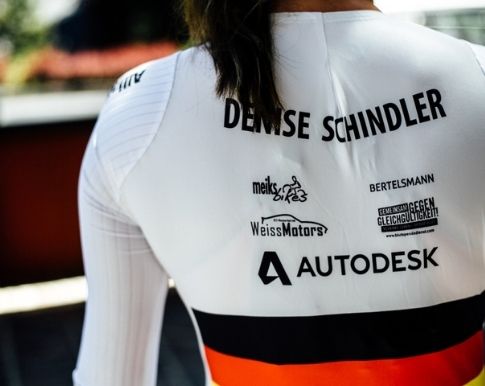
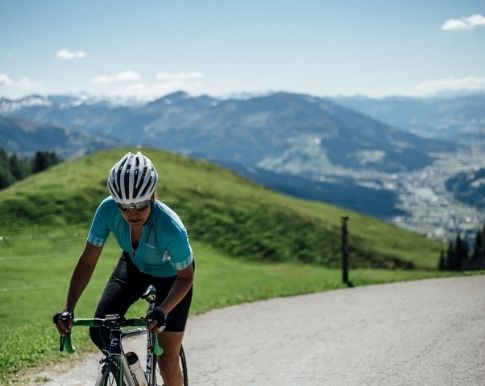
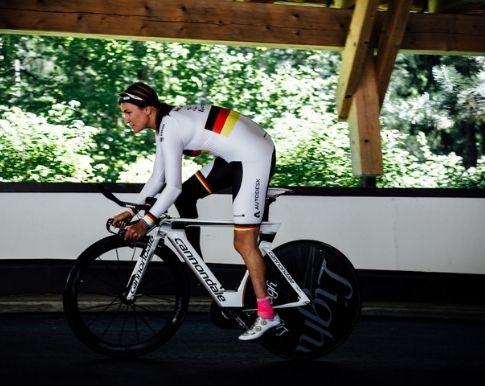
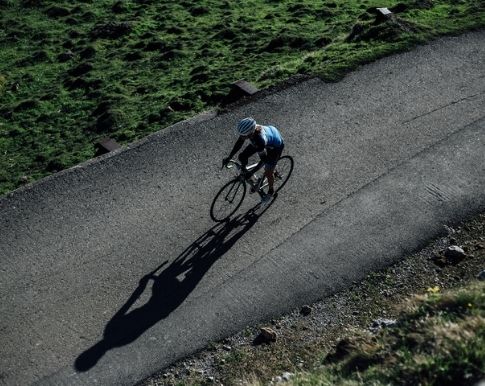
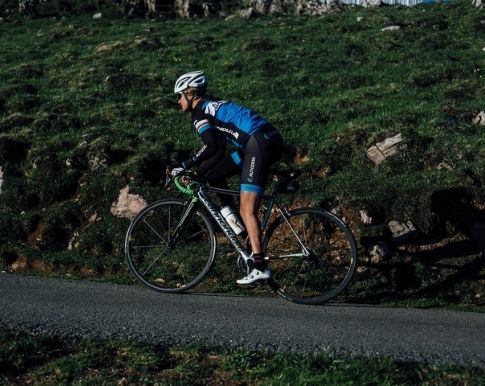
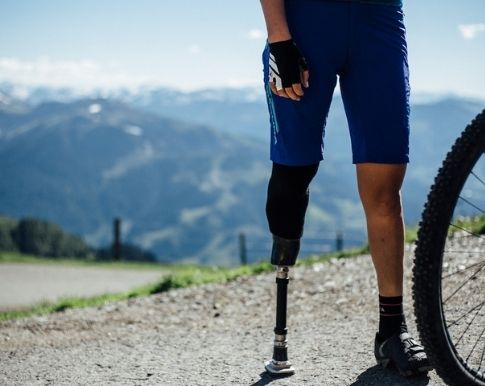
THE LONDON CATALYST
Despite Schindler’s sporting breakthrough, the prospect of becoming a Paralympian might have seemed remote indeed. It’s a measure of her determination that she has transformed herself into a world class athlete, despite the greatest setback imaginable.
Stories of determination are not uncommon in Paralympic sport, of course, and yet even the narrative of triumph over adversity has been supplanted. The presentation of the Paralympic Games at London 2012 was almost entirely centred on elite athletic performance - a bold shift in emphasis entirely justified by the subsequent performances.
“I always say that it’s not easy. I show people what happens behind the scenes, and not just when I’m on the podium and smiling. That's important.”
Schindler is an enthusiastic proponent of this new direction for the Paralympic Movement, and credits the London Games as a catalyst. She recalls the giant posters and banners that filled the city throughout August and September: a campaign that gave equal billing to the Olympic and Paralympic Games.
Channel 4, the official broadcaster of the Paralympic Games in the host country, even went so far as a billboard campaign with the strapline “Thanks for the warm up”, a bold if implicit pledge that the Paralympics would surpass the fortnight of Olympic competition that had preceded it.
“I think Great Britain played a major role in changing how people see the Paralympic Movement,” Schindler says. “It had started a bit in Beijing, but London represented the Paralympic Games in a brilliant way.
“There were thousands of people cheering, just for us. I remember my race in the velodrome, which is still one of the most brilliant races of my whole career. Basically, the crowd just screamed us through the race! It was a total game-changer.”
THE DIGITAL WORLD
The shift in public perception has been accompanied by technical improvements to the prosthetics worn by amputee athletes. Schindler, unsurprisingly, is at the forefront in this regard, too. She has worked closely with German tech firm Autodesk to develop a 3D-printed prosthesis in carbon fibre.
Her list of demands might have made familiar reading to any Formula One constructor. The prosthesis had to be lightweight, aerodynamic and immensely strong. Power transfer is critical to any cyclist (witness the market dominance of carbon-soled shoes) but especially so to an amputee.
“We need to show that it’s ok not to have a leg and to be confident, and to feel like a woman and to be sexy. We have a different kind of confidence.”
Schindler’s versatility - she races on the track, as well as the road - added another dimension. The prosthesis would need to be strong enough to withstand the forces of a standing start on the track, but also sufficiently comfortable to use in road races lasting several hours.
Working in the digital realm offered new possibilities. Previously, Schindler’s prosthesis had been developed from casts of her leg. Now, she is scanned, and Autodesk develops the prosthesis with powerful design software. When the numbers on screen show an advantage, a rapid prototype is printed and real world testing begins.
If Autodesk thought they were in for an easy time, they hadn’t banked on Schindler’s ferocious will to win. More than 100 iterations of her prosthesis were developed virtually, with input from experts in aerodynamics from FES in Berlin, bike supplier to the German track team. Schindler is the first to admit that she pushed Autodesk hard.
“I always say that in the beginning they thought, ‘Ok, we’re going to do a prosthetic, no problem.’ But then they found out, ‘Ok, we have a challenging para athlete!’ But that’s how I work. I wanted to be on the top of the podium, so I challenged them to be there.”
HEY, MR PRESIDENT
Her work with Autodesk led to a meeting with then-US President Barack Obama, whose dignified bearing is perhaps the greatest point of difference with his successor. Schindler is no stranger to public performance, but even she admits to being unnerved by the 150 journalists and photographers waiting alongside her for Obama’s arrival.
“The first four words he said were, ‘Hey, how are you?’ And with those words, I totally relaxed. He was just very gentle, like neighbour to neighbour. Then he gave me the microphone and I said: ‘Oh, I’m fine. How are you?’
“Everyone fails, and I think that’s the key to success: to fail and get better. If you say, ‘I’m the best’, you start losing.”
“And with that, he totally took away any feeling of being nervous. He just has a very gentle attitude; very easy. He doesn’t feel that he has to stand higher than anyone. And I knew that he loved sport, so I was sure that we would have a good connection.”
Those who attend her own public addresses might experience a similar feeling. Schindler is confident and likeable. Despite the world championships and Paralympic medals (two in Rio), she is not one to assume superiority. Quite the reverse. As her list of accomplishments grows, so does her desire to take on responsibility.
Whether speaking before a live audience, say, at a panel discussion hosted by Adidas, or on radio or television broadcasts, Schindler is keen to point out the travails that beset even one whose life is now so seemingly blessed.
“I always say that it’s not easy. I show them the background, what I had to overcome; that there were a lot of times when I was about to give up, and then I refocused. I think that’s very important. I show them what happens behind the scenes, and not just when I’m on the podium and smiling.”
HUMAN BEING/BEING HUMAN
Schindler’s extraordinary personal story defines her, while simultaneously having no bearing on her personality. She wears her achievements as lightly as her high-tech prosthesis. The subject of disability arises only during our interview; for the rest of our time together, the topic is redundant. She is merely one world class athlete among the host that Endura has brought together in Kitzbühel.
In an age where even the vacuous cast of daytime television talks of being “on a journey”, Schindler’s tale of triumph over adversity seems almost fantastical, yet she is the living proof that even the cruelest circumstances can be overcome.
“Until I was 18, sport was not something I loved, or even liked. I was always the last to be chosen. And the feeling that I have on the bike is: ‘I’m not the last.’”
Finishing the Tour Transalp will be another major accomplishment, but Schindler’s greatest influence may lie beyond the athletic realm. When she speaks of her pride in the Paralympic Movement, it is with genuine feeling, but she is aware that there is a world outside of elite sport.
“We have a major role in society; we are role models. In some countries, [disabled] people are still struggling. If you are raised in Europe, it’s ok to be disabled, but we still have countries where it isn’t, and we still need role models to explain and to give self-confidence.”
Schindler knows from experience that fundamental shifts in the attitudes of mainstream society can be achieved, even if there is still work to be done. She talks frankly of how, as a teenager, the pressure to fit in was exacerbated by her disability, and how the need for self-confidence is ongoing in the lives of disabled people.
“We need to show that it’s ok not to have a leg and to be confident, and to feel like a woman and to be sexy. In the past, the attitude had always been: ‘They’re disabled. Ok, they can do sport, but sexy? No!’ And that totally changed. We have a different kind of confidence, like we wear prosthetics as a fancy shoe, with different styles.”
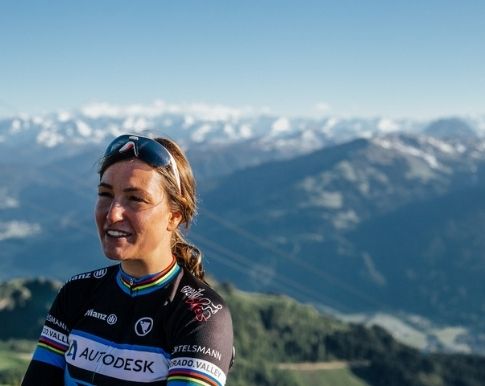

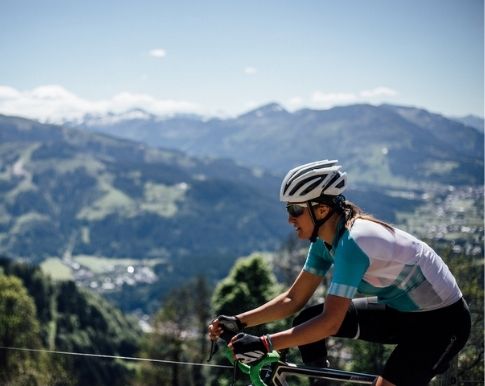
HUMILITY AND HUMANITY
While Schindler is modest about her accomplishments, humility is not her defining characteristic. It is something greater. The overwhelming impression left by conversation with Schindler is of having met a person of real humanity. Despite her own condition, and the relentless schedule of training and competition familiar to any elite athlete, she has a genuine desire to improve things for others.
Her public speeches are no mere adjunct to an athletic career; rather they are an opportunity to set others on a similar path to a happier life, whether through sport or some other passion. She recognises her ability to “light a fire” inside her audience, and appreciates that the value of this talent lies beyond personal gratification.
“The first four words President Obama said were, ‘Hey, how are you?’ And with those words, I totally relaxed.”
“I’m able to bring out the best of them and to move them out of their comfort zone; to overcome their fears and chase their dreams. I love doing that.”
She also recognises that this transformation in others can only be achieved by sharing stories of her own failures, and of her own ongoing struggles. This must be difficult. Might it not be easier to play the medal winner and let success work its magic?
“But that’s not human,” she insists. “Everyone has failures.”
“Everyone fails, and I think that’s the key to success: to fail and get better. If you stand there and say, ‘I’m the best’, you start losing.”
She pauses. We are in philosophical territory. The smile returns, and with maximum wattage. “That’s my opinion.”
FOOTNOTES Words by Timothy John. Images by Sean Hardy Kitzbuhel, Austria
© 2021 ENDURA
